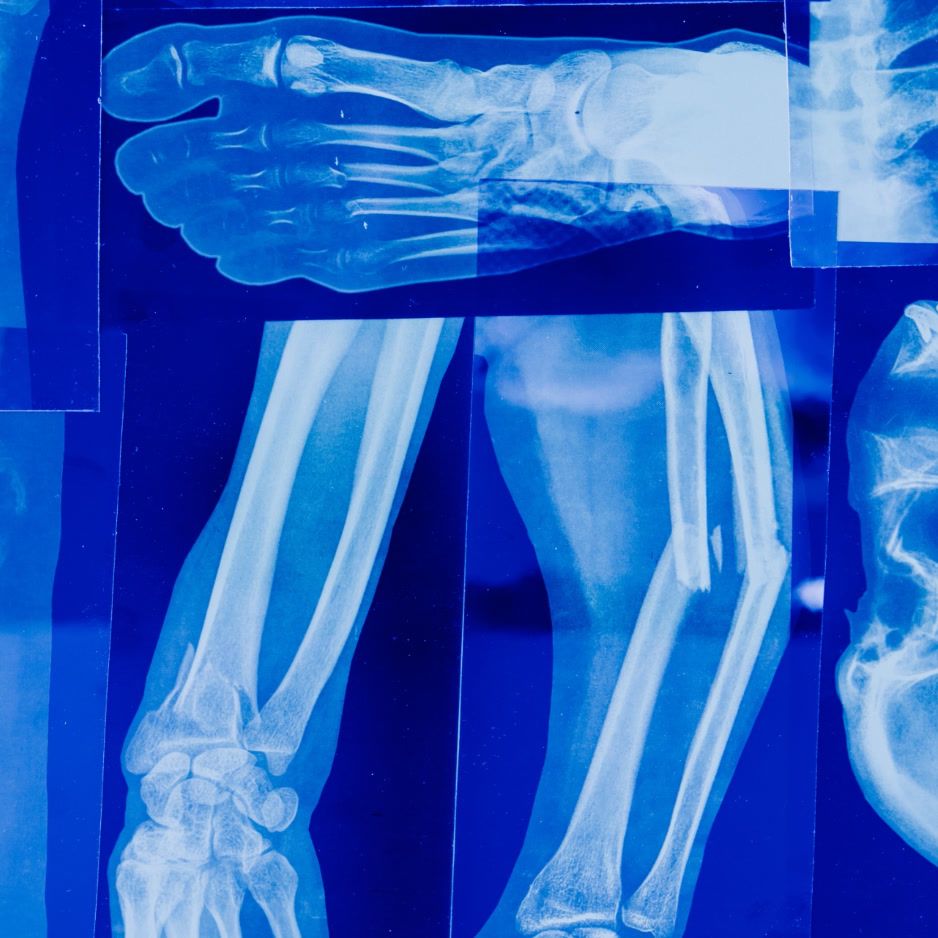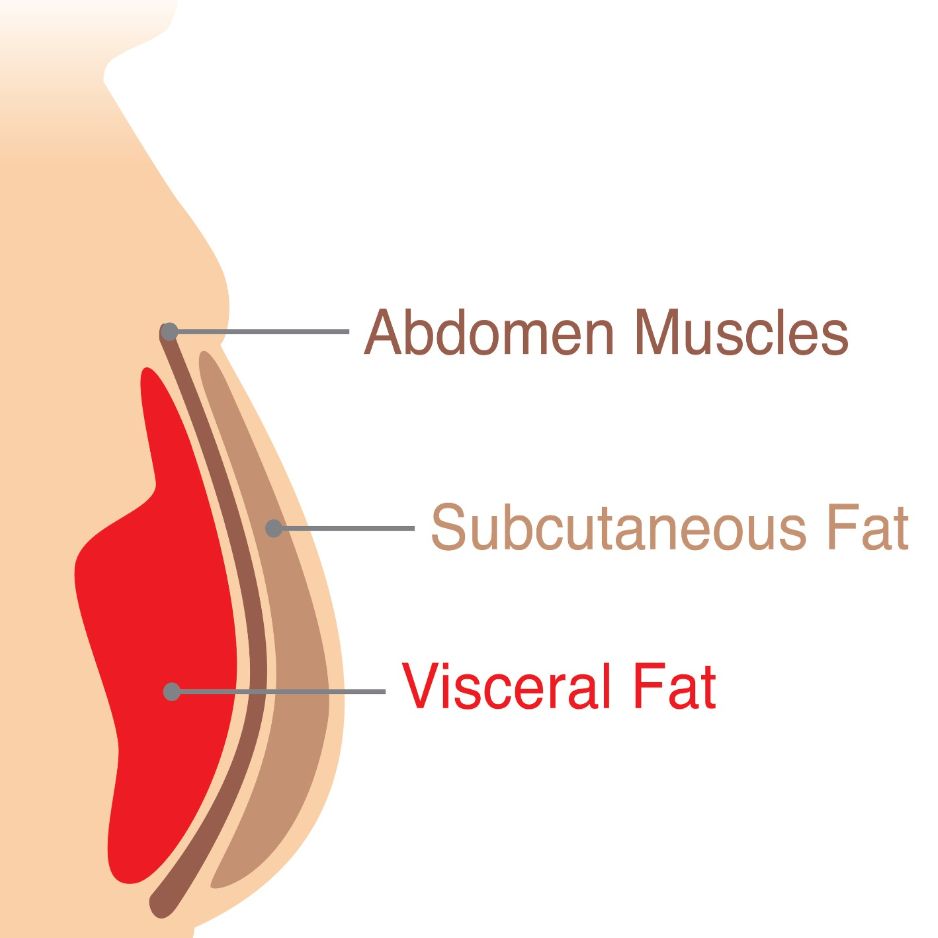Microdosing Ozempic: Understanding Low-Dose Semaglutide

Microdosing Ozempic: An In-Depth Look at Low-Dose Semaglutide
Disclaimer: Ozempic® (semaglutide) is FDA-approved for type 2 diabetes management at specific doses. Using lower-than-approved doses for weight loss or other benefits is off-label. This article is educational and does not replace medical advice.
Table of Contents
- What Is Microdosing Ozempic?
- How Semaglutide Works – Even at Tiny Doses
- Typical Microdosing Protocols & Click-Counting
- Potential Benefits of Microdosing Ozempic
- Risks, Side Effects & FDA Concerns
- Microdosing vs. Standard Ozempic Dosing
- Cost Breakdown: Brand vs. Compounded vs. Telehealth
- Illustrative Case Scenarios
- Risk-Benefit Decision Matrix
- Where Body Composition Tracking Fits In
- Frequently Asked Questions
What Is Microdosing Ozempic?
“Microdosing” Ozempic means injecting sub-therapeutic amounts—typically 0.25 mg to 0.5 mg once per week—instead of escalating to the FDA-recommended ≥ 1 mg dose, a practice detailed in coverage from Medical News Today.
People typically shrink the dose in three main ways:
- Counting clicks. Turning the dial and listening for audible “clicks,” then stopping short of the full dose.
- Using insulin syringes. Transferring medication into an insulin syringe to measure smaller volumes.
- Ordering low-dose pens. Purchasing pre-filled, low-dose pens from compounding pharmacies.
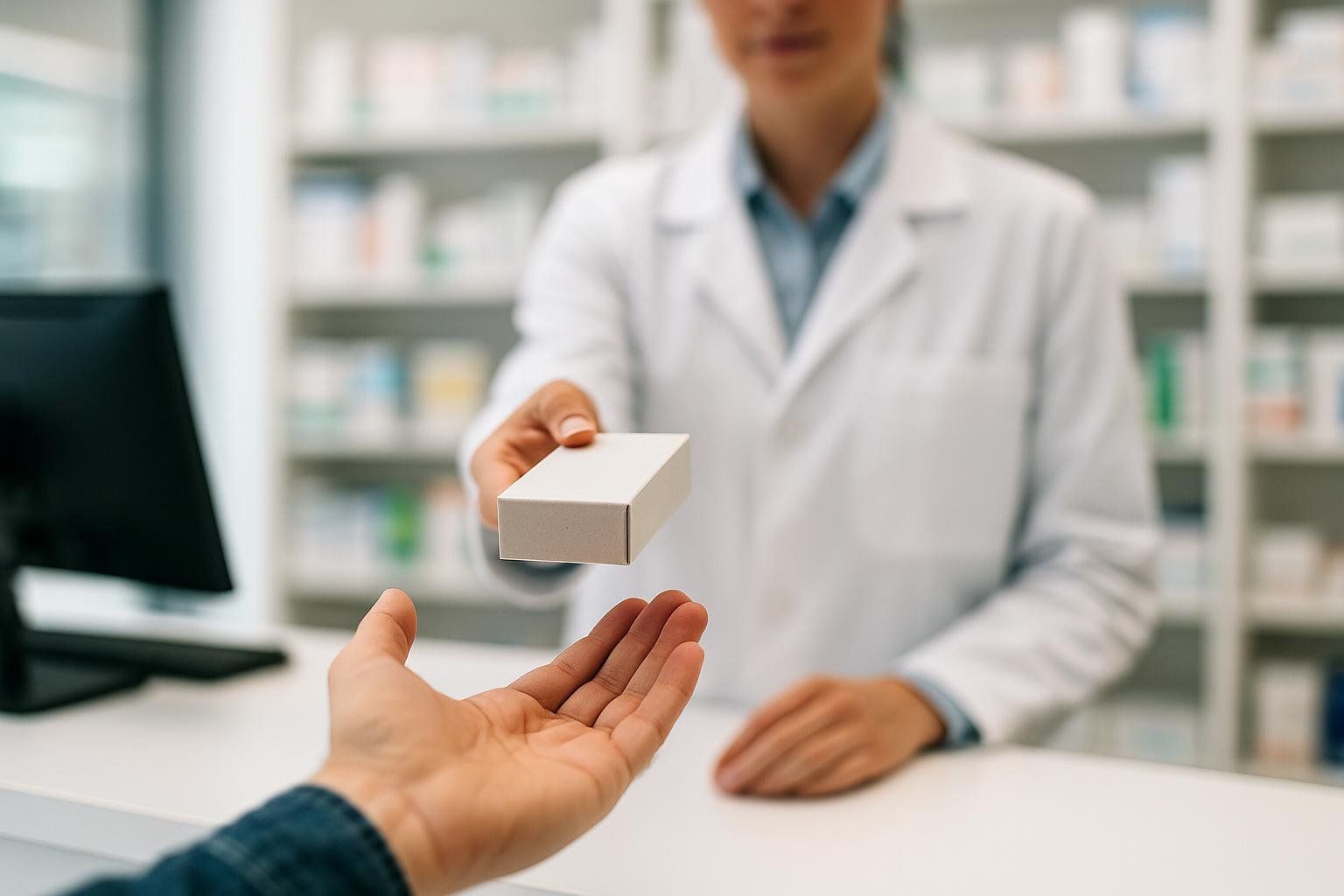
Why the buzz? Users report fewer gastrointestinal (GI) side effects, lower costs, and more gradual weight or metabolic changes than with full-strength regimens.
How Semaglutide Works – Even at Tiny Doses
Semaglutide is a GLP-1 receptor agonist. It mimics the gut hormone GLP-1 to:
- slow stomach emptying (you feel full sooner)
- stimulate insulin release and suppress glucagon (better blood-sugar control)
- act on appetite centers in the brain (reduced cravings)
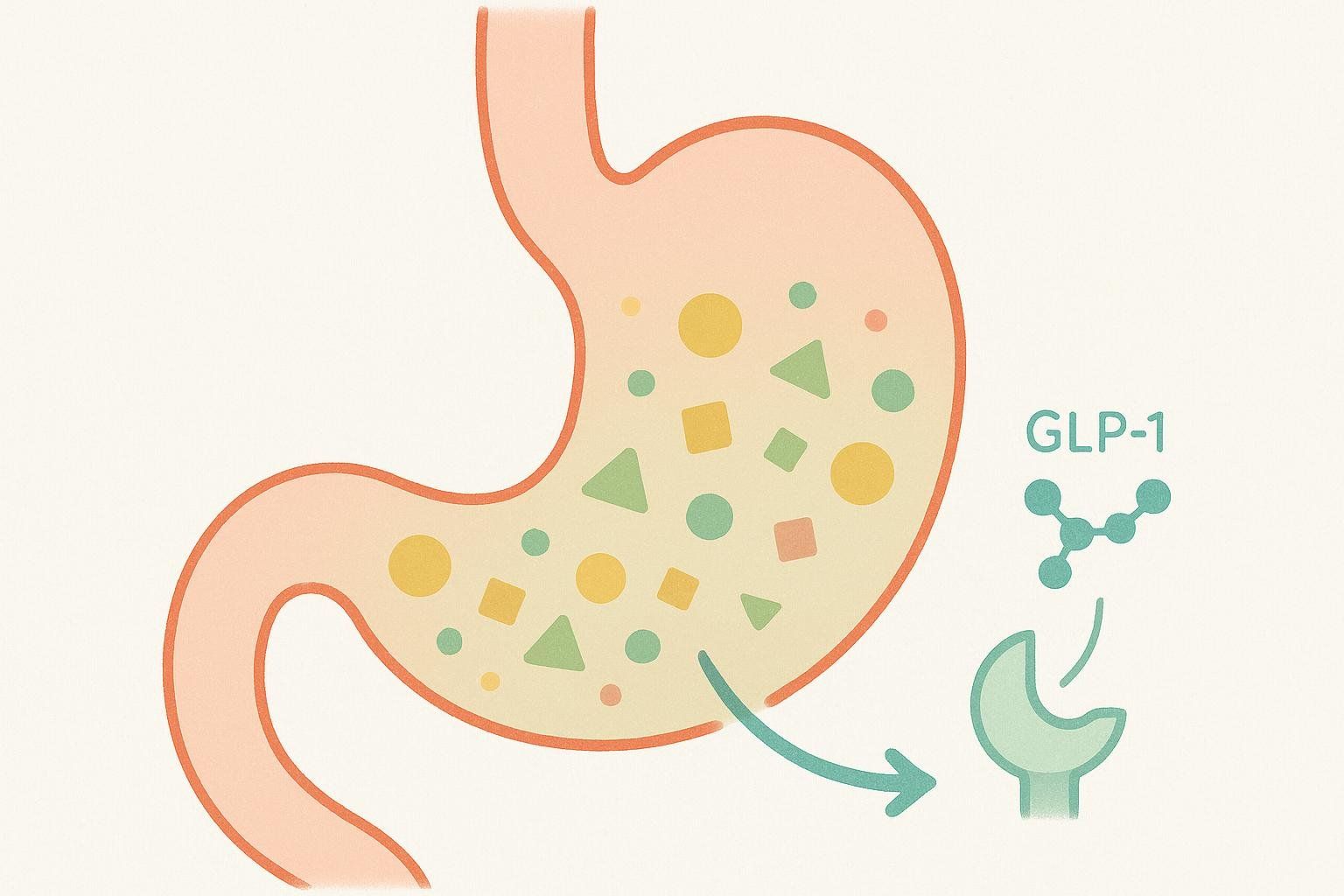
Animal and early human studies suggest these mechanisms kick in below the 1 mg weekly dose, as discussed in Healthline’s explainer on microdosing. However, effects are dose-responsive—smaller doses usually mean smaller changes.
Typical Microdosing Protocols & Click-Counting
Below is an illustrative off-label schedule gathered from telehealth clinics and patient forums. Click totals vary by pen strength and brand. Always verify conversions with a pharmacist.
| Week | Dose (mg) | Click Guidance† | Notes |
|---|---|---|---|
| 1–4 | 0.25 | Varies by pen | “Tolerability phase”; most users report mild nausea, if any. |
| 5–8 | 0.33 | Varies by pen | Small uptick if side effects are minimal. |
| 9–12 | 0.50 | Varies by pen | Plateau phase; many stay here long-term. |
| 13+ | 0.50–0.75 | Varies by pen | Increase only if weight loss stalls and GI symptoms are absent. |
† Obtain a pharmacist-verified click chart for your specific pen before adjusting.
Important: DIY click-counting constitutes drug manipulation, a practice that UCLA Health describes as experimental and unregulated.
Potential Benefits of Microdosing Ozempic
- Gradual, muscle-sparing weight loss. Losing about ½–1 lb per week may help preserve lean mass and reduce the likelihood of facial volume loss—sometimes dubbed “Ozempic face,” a term describing gauntness linked to rapid weight reduction.
- Fewer GI side effects. Lower doses correlate with reduced nausea and diarrhea, a benefit highlighted in Verywell Health’s overview of microdosing.
- Cost savings. Stretching a single pen over 8–12 weeks lowers monthly spend (see cost section).
- Metabolic fine-tuning. Preliminary lab work hints at improvements in inflammation and liver enzymes at sub-therapeutic doses—findings Healthline notes remain early and anecdotal.
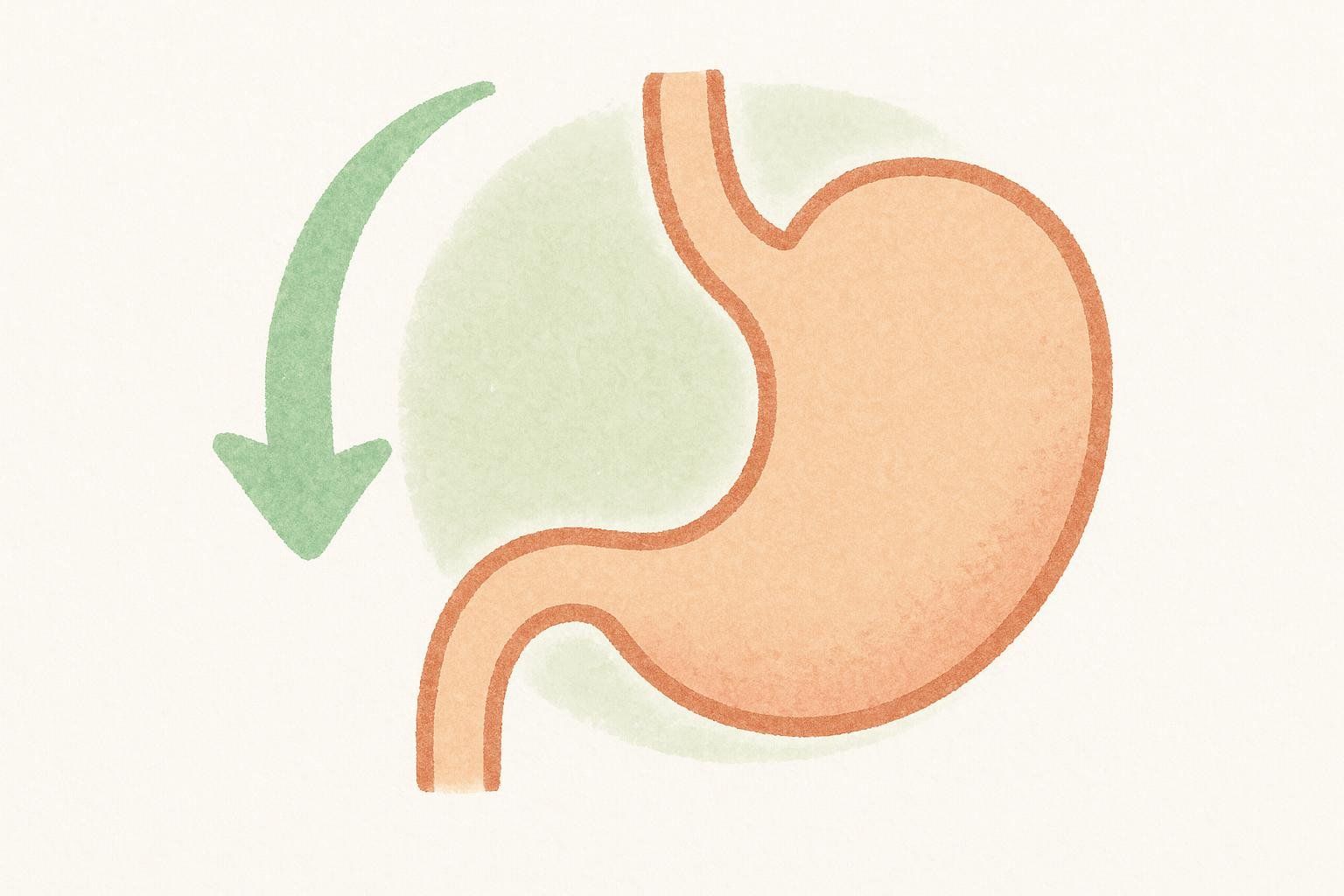
Risks, Side Effects & FDA Concerns
- Sub-optimal efficacy. You may plateau faster than with guideline doses.
- Unknown long-term safety. No controlled trials test chronic microdosing.
- Quality of compounded semaglutide. The FDA warns consumers about counterfeit Ozempic and dosing errors with compounded products.
- Needle-sharing contamination. Transferring drug into another syringe raises infection risk.
- Insurance denial. Off-label dosing is rarely covered.

Microdosing vs. Standard Ozempic Dosing
| Feature | FDA-Approved Path | Microdosing Path |
|---|---|---|
| Starting Dose | 0.25 mg/week (4 weeks) | Same |
| Target Dose | 1–2 mg/week | 0.25–0.75 mg/week |
| Average 68-week Weight Loss* | ~15 % body weight at 2.4 mg (Wegovy data) | Anecdotal 5–10 % |
| Common GI Nausea | 44 % | 10–25 % (self-reports) |
| Monthly Drug Cost | $899+ list price | ~$75–$300 (dose splitting) |
| Evidence Base | Robust RCTs | Case reports & small pilot studies |
*Source: STEP-1 trial, NEJM 2021.
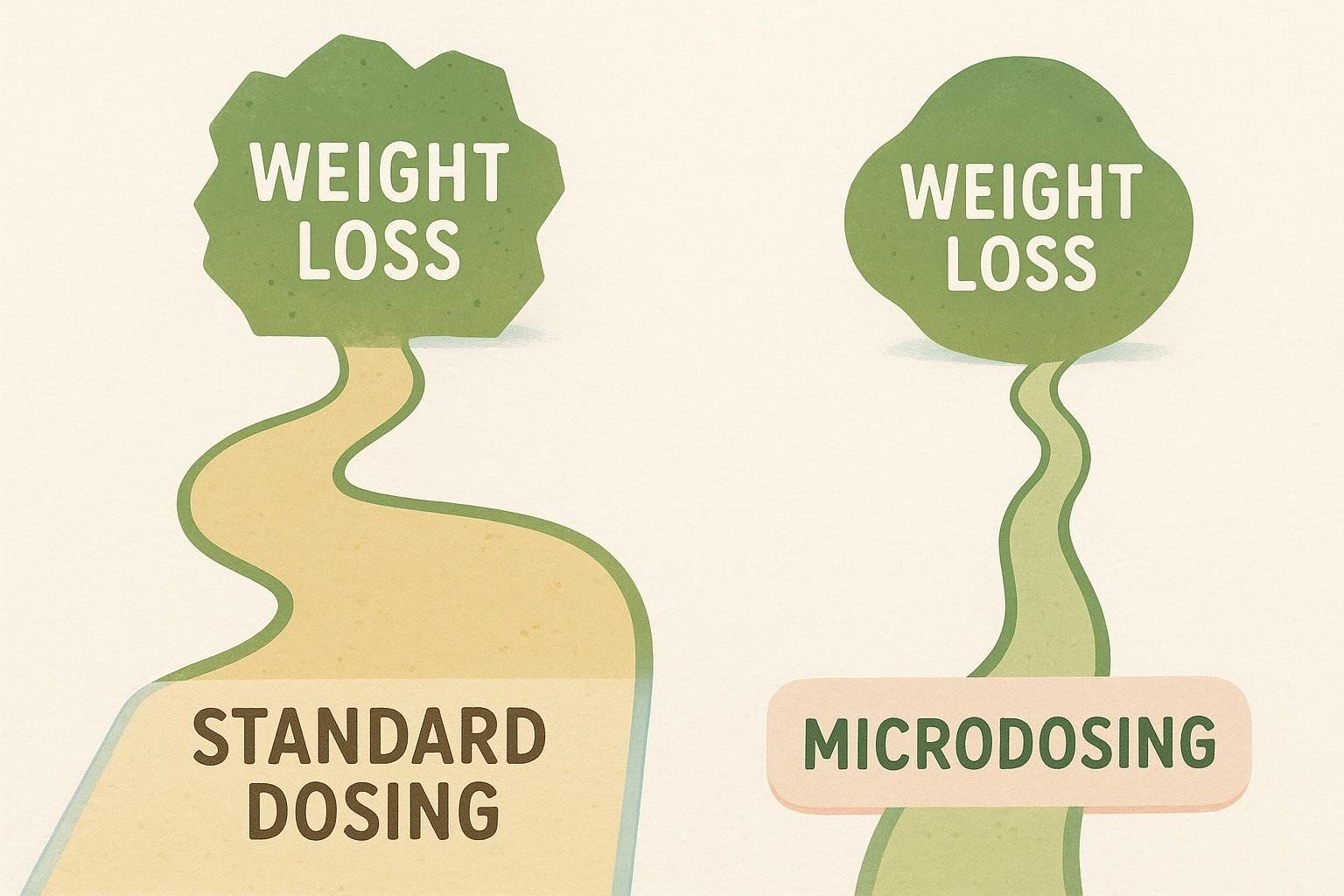
Cost Breakdown: Brand vs. Compounded vs. Telehealth
| Source | Estimated Monthly Cost* | Pros | Cons |
|---|---|---|---|
| Retail Pharmacy (brand) | $899 list; as low as a $25 copay with manufacturer savings card (eligibility applies) | FDA-approved quality | Savings cards generally apply to diabetes indications—off-label use may not qualify |
| Compounding Pharmacy | $150–$350 | Pre-filled low-dose pens, big savings | Variable purity, legal gray zone |
| Subscription Telehealth (e.g., Calibrate) | $135–$199 + drug | Coaching, labs, insurance help | Year-long commitment |
*Assumes 0.5 mg weekly consumption.

Illustrative Case Scenarios
The following scenarios are composite examples based on common user reports in forums and small clinic audits. They do not represent controlled studies.
1. Sarah, 35 – Gradual Weight Loss
Protocol: 0.25 mg → 0.5 mg in Week 9
Results: –11 lbs over 16 weeks, minimal nausea; DEXA showed lean-mass preservation (learn how DEXA measures muscle vs. fat)
Takeaway: Slow escalation paired with strength training helped curb muscle loss.
2. Brian, 48 – Biohacking Inflammation
Protocol: 0.25 mg indefinitely
Results: C-reactive protein (CRP) ↓ 22 %; visceral fat ↓ ≈ 0.6 lbs, confirmed via DEXA body-composition scan
Takeaway: Biomarker gains are possible, but weight loss was modest.
3. Community Clinic Observations – Patient Tolerability
Protocol: 15 patients escalated from 0.25 mg to 0.5 mg
Observations: ~80 % remained on therapy at 12 weeks versus ~60 % retention in historical full-dose records; two patients discontinued due to nausea
Takeaway: Lower doses may improve tolerability, though weight loss trailed standard dosing.
Risk-Benefit Decision Matrix
| Consideration | Low Priority | Medium | High Priority |
|---|---|---|---|
| Primary Goal | Rapid weight loss | Cost savings | Gradual weight loss with fewer side effects |
| GI Sensitivity | Rarely nauseous | Occasional | Severe history |
| Drug Access / Cost | Insurance covers brand | Coupon only | Self-pay or high out-of-pocket |
| Clinical Oversight | Monthly MD check-ins | Telehealth | DIY |
| Lean-Mass Tracking | No tracking | BIA scale | Regular DEXA scans |
How to use this matrix: If several of your personal factors place you in the Medium or High Priority columns, discussing a microdosing approach with a qualified clinician may be worthwhile.
Where Body Composition Tracking Fits In
Whether you microdose or follow full guidelines, tracking fat vs. muscle matters. DEXA scans quantify:
- Visceral fat—the risky fat Ozempic often targets first
- Lean mass�—so you know if you’re losing muscle
- Bone density—important because rapid weight loss can lower bone mass
Our analysis of aggregated, anonymized BodySpec client data (n = 4,200; July 2022–June 2023) underscores the value of consistent feedback:
- Clients who scanned monthly for a full year lost 19 % of their starting body-fat mass on average.
- Those who scanned quarterly lost 10 % over the same period.
This suggests that monthly check-ins were associated with nearly 90 % greater fat loss compared with quarterly scans.
Schedule a baseline scan, then re-scan every 8–12 weeks (or even monthly) to objectively gauge progress and refine your plan. Learn more in Mastering Ozempic Dosing and Why Am I Not Losing Weight on Ozempic?.
Frequently Asked Questions
Is microdosing Ozempic safe?
Safety data is limited. Lower doses tend to have fewer side effects, but long-term outcomes are unknown. Always consult a healthcare professional.
Can I split my pen to save money?
Many patients do, but it voids manufacturer instructions and can lead to dosing errors. Pharmacists may refuse replacements if pens are damaged.
Do I need a prescription for compounded semaglutide?
Yes. Legitimate 503A compounders require a doctor’s prescription.
Will insurance cover microdosing?
Unlikely, because the dose is off-label. Some plans cover diabetes indications regardless of dose.
How soon will I see results?
Anecdotally, appetite changes occur within days; weight loss may take 3–4 weeks.
Key Takeaways
- Microdosing Ozempic typically means 0.25–0.5 mg weekly, often achieved by click-counting.
- Benefits: gentler side effects, lower costs, steady fat loss.
- Trade-offs: weaker clinical evidence, insurance hurdles, purity concerns.
- Pair any GLP-1 plan with regular DEXA body-composition tracking—consistent data can accelerate fat loss while protecting muscle.
Book a $40 BodySpec DEXA scan in under two minutes—no referral needed.

